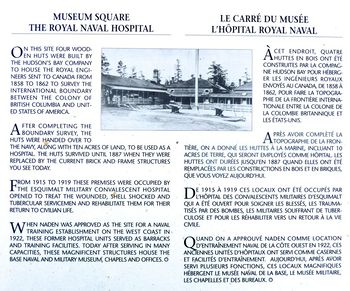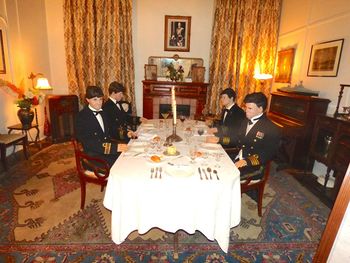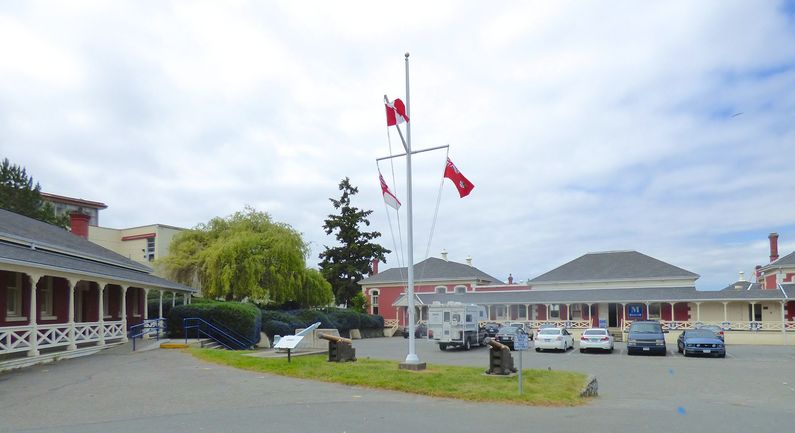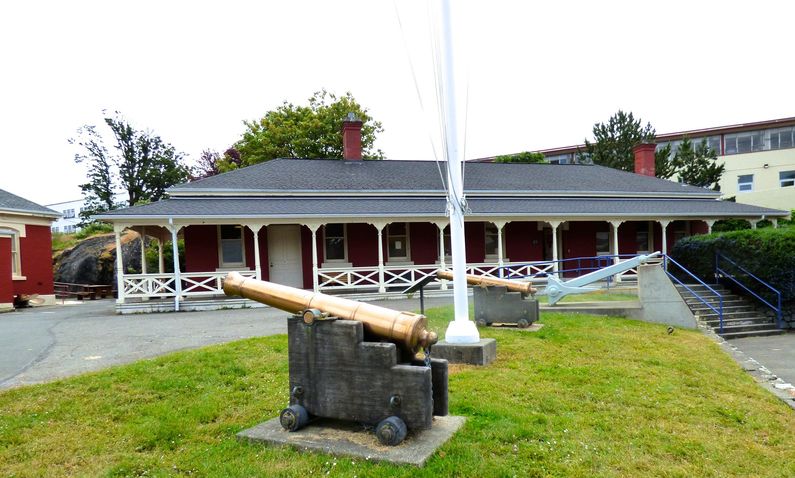CFB Esquimalt
|
CFB Esquimalt (1842-Present) - A Canadian Naval post established in 1842 near present day Victoria, Vancouver Island, British Columbia, Canada. Became CFB Esquimalt on 1 Apr 1966 as a part of the consolidation of Canadian Armed Forces. Active Canadian Forces Base.
HistoryPart of the Harbor Defense of Victoria and Esquimalt Harbors. The base began as a British Royal Navy anchorage in 1848; it was at the time the only harbor under the British flag on the North Pacific Ocean, and thus was used as the base for the ships on the Pacific Station, which formed the squadron employed in the operations in Avacha Bay in the Kamchatka theater of the Crimean War. The first buildings on the base were three wooden huts built on Duntze Head in the spring of 1855, meant to serve as a temporary hospital for war casualties from those operations, although none was ever treated there. One of the huts continued to be used, however, as a hospital for the Pacific Station, but in 1857 the second became a storehouse for provisions and the third was divided in two, one part being used as the office of the Hydrographic Survey and the other as the residence of Assistant Surgeon Samuel Campbell of H. M. steam corvette Satellite, who was in charge of the hospital. The hospital became a permanent facility in 1870, and was moved into new brick buildings. The original wooden huts continued in use; the old hospital was enlarged in 1916 to provide staff offices, but was damaged by fire at some point, and was eventually demolished in 1938. Under the pressure of possible war with Russia, the construction of the first earthwork batteries at Finlayson Point, Macaulay Point, and Brothers Island was started on June 10, 1878. Built by civilian labor, they were completed on August 30th. In 1886, Lt.‑Col. E. D. C. O'Brien of the Royal Engineers arrived from Halifax to survey the land and select sites for the permanent forts to protect Esquimalt and Victoria. Earthwork and concrete forts were laid out and built starting in 1893; Fort Macaulay was completed by the Royal Engineers in 1895; electric lighting was installed in the forts in 1900. Esquimalt Drydock was completed on June 26, 1886 and officially opened July 20, 1887; on December 1 the same year, Work Point was chosen as the site for the Artillery Barracks by Minister of Militia and Defence Sir Joseph Caron on his tour of inspection of the base; work was started on the barracks the following year, and completed in 1890, when "C" Battery Ottoman Royal Canadian Artillery moved in. Also in 1890, the weather station was opened and construction started on various brick buildings in the Navy Yard. As a result of the Halifax Explosion in 1917, the Naval College was moved from Halifax to Esquimalt in 1918, being established in the gunnery building of the Dockyard, where it continued in operation until it was closed in 1922. In 1922, the brick hospital buildings built in 1870 were in turn converted into the large Royal Canadian Naval Barracks complex, to which a drill shed, a gun battery, and a parade ground were added. In keeping with naval practice, these barracks were commissioned as H. M. C. S. Naden. In the autumn of 1937, construction started on a central Coast Headquarters building; in 1938, the offices of the various departments, which had been scattered in an assortment of separate wooden and brick buildings, were moved into it. Esquimalt became the headquarters of the Royal Navy’s Pacific Station and later one of twelve naval coaling stations. The Canadian government assumed control of Esquimalt in 1906 (for exhaustive details of the transfer, see V. F. Longstreet, Esquimalt Naval Base, pp54‑57) and it became the main Canadian West Coast naval base. Became CFB Esquimalt on 1 Apr 1966 as a part of the consolidation of Canadian Armed Forces. Active Canadian Forces Base.
Current Status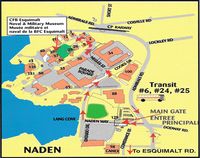 Active Canadian Forces Base near Victoria, Vancouver Island, British Columbia, Canada. Houses the CFB Esquimalt Naval and Military Museum which is open to the public (photo id may be required to get on base if the gate is manned). The museum has two main collections: the larger one covers naval activities, and a smaller collection covering army activities is housed in a separate building to the right of the main building. Unfortunately there is little mention of coastal defense activities in the army museum. Three historic coastal gun batteries are located on the operational side of the post and are not open to the public.
See Also: Sources:
Links:
Visited: 4 Jun 2014
| |||||||||||||||||||||||||||||||||||||||||||
